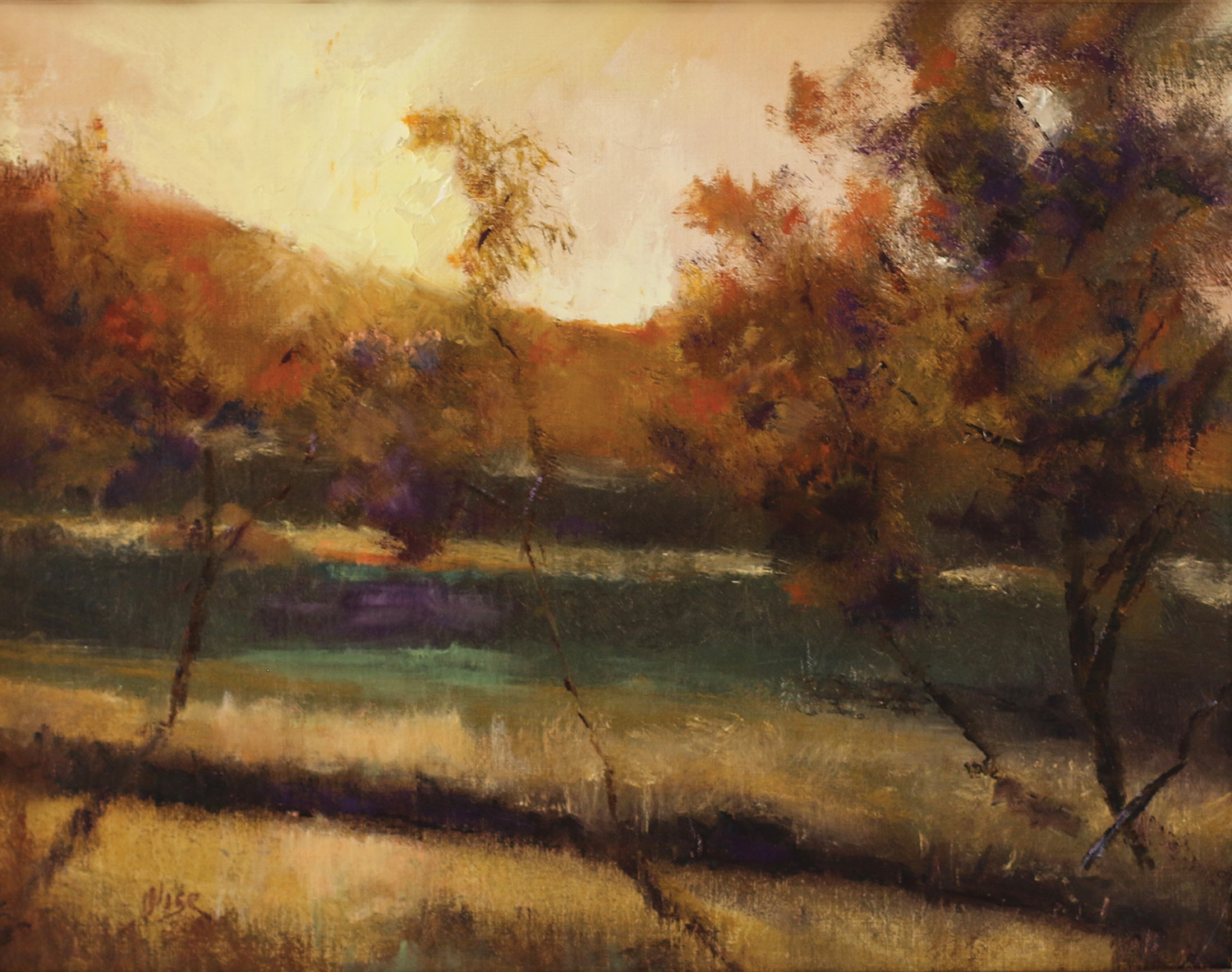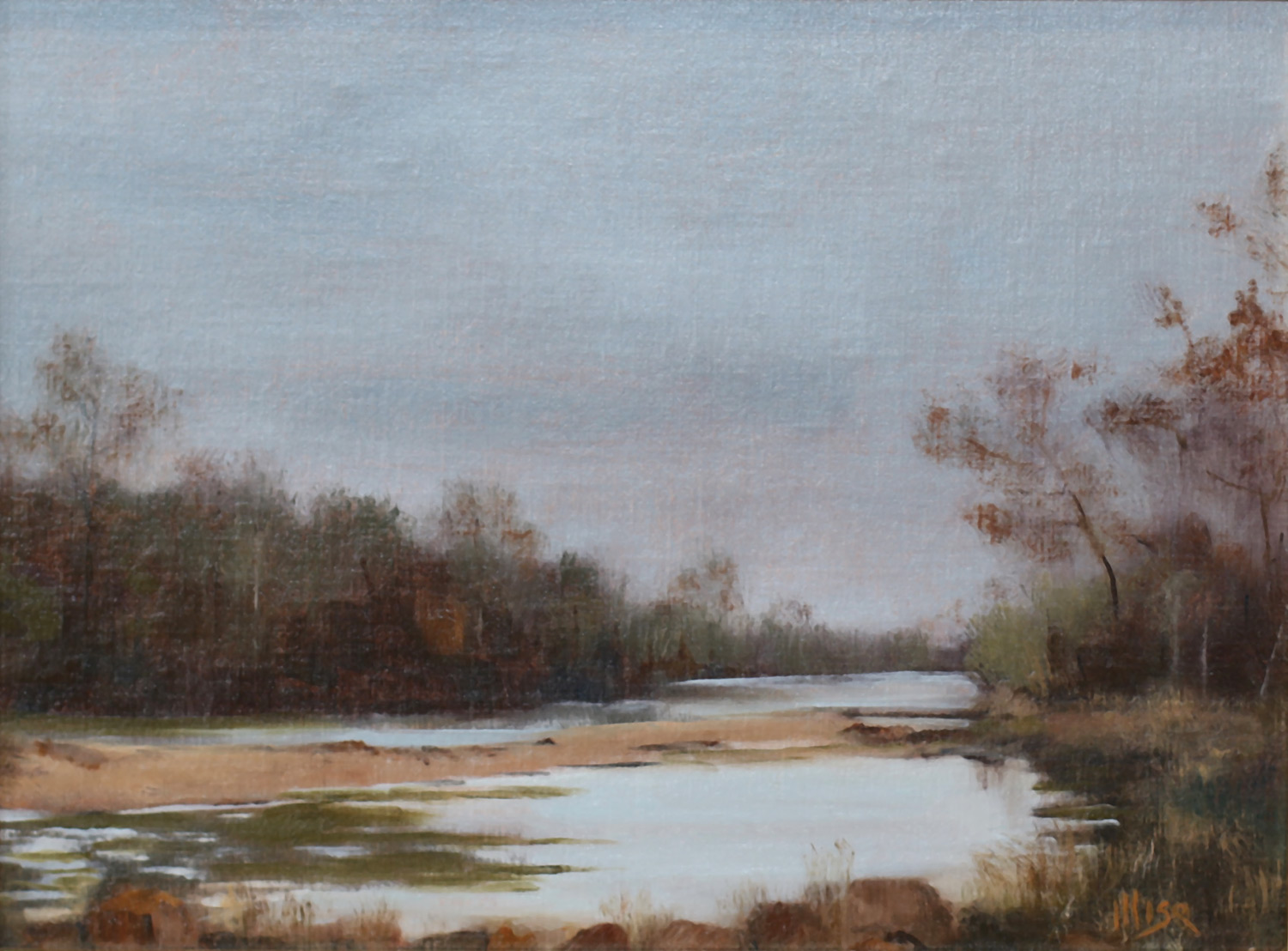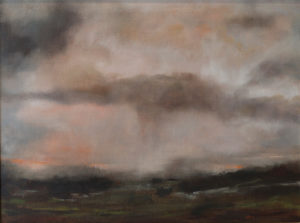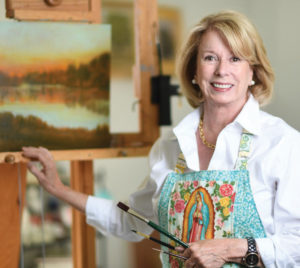
02 Oct Illuminations: Highlighting the work of painter Marie Figge Wise
Two things drive Marie Figge Wise: fishing and finding the truth. Fishing takes her to places where nature speaks in its truest voice, in the lullaby of pastures, the whispers of spring creeks, and the poetry of mountain rivers. Whether her tool of choice is her rod and reel or her paints and brushes depends on her itinerary, but wherever she is, her camera is there, too.
 “McKinney Roughs” | Oil | 9 x 12 inches
“McKinney Roughs” | Oil | 9 x 12 inches
“Fishing takes me to the most beautiful places,” she says. “If I don’t paint on site, I take photographs — but photographs lie, you can’t get depth from the vista.” Besides, it’s not the exactness of a place she wants to convey, but the emotion of being there. “I go out as much as I can to paint. But if I’m working from photos, I’ll take those back to the studio and try to maintain the truth of what I’ve seen.”
Classically trained, Wise still uses thin layers of glaze to create a transparency reminiscent of Renaissance painters. However classic her technique, her content reveals a more contemporary perspective. Her adherence to emotion, to veracity, comes across in her tonal qualities and the scrim of memory where our experiences reside.

“Rain” | Oil | 18 x 24 inches
“When I’m in a place that I want to paint, I feel an emotion and that is something that’s part of me. … That’s what I want to share on the canvas,” she says. “And I know expansive vistas can be daunting to a painter. It can be overwhelming to a viewer as well. So I pare and edit and crop what I’m looking at until I have the essence of the landscape. By taking just a portion of that grand panorama, you come away with a feeling of wholeness.”
Sometimes she’ll do a quick study in oils on a small panel. That immediate response to her environment, like a dictation of color and composition, of reflections and light, will be enough so when she returns to her studio she can portray the elemental fidelity she first encountered.
“Oftentimes, the studies are so full of motion,” she says. “The gestures of the landscape can really be captured in the smaller studies. They’re quick and I can get it down without thinking too much. It really is my emotional map.”
Wise, at 72, says she’s still learning, still tweaking her techniques, and lately she’s been experimenting with a simpler color palette.
 “It helped me harmonize my work without getting too many different variations that could be distracting,” she says. “When you use too many colors it can be very broken up. I’ve spent a year painting clouds, I spent a year painting water, I spent a year painting trees. I give myself these objectives to concentrate on one thing. They may not end up as a painting, but it helps me to fully realize these parts of the landscape. I become one with them. It’s true. By working like that, I can get to know a tree up close and personal. Even in a bad painting — what I think is a bad painting — there’s some redeeming quality. As an artist, you have to be brutal. Every mistake and every time I wipe off the canvas creates a wonderful underpainting and a context for the next painting.”
“It helped me harmonize my work without getting too many different variations that could be distracting,” she says. “When you use too many colors it can be very broken up. I’ve spent a year painting clouds, I spent a year painting water, I spent a year painting trees. I give myself these objectives to concentrate on one thing. They may not end up as a painting, but it helps me to fully realize these parts of the landscape. I become one with them. It’s true. By working like that, I can get to know a tree up close and personal. Even in a bad painting — what I think is a bad painting — there’s some redeeming quality. As an artist, you have to be brutal. Every mistake and every time I wipe off the canvas creates a wonderful underpainting and a context for the next painting.”
Ongoing through October 27, Wise will participate in the group show Western Landscapes at Ann Korologos Gallery in Basalt, Colorado. She will also participate in the group show Different Strokes from November 3 to 24 at the Octavia Gallery in New Orleans, Louisiana. She is represented by both of those galleries, the Jack Meier Gallery in Houston, Texas, and the RS Hanna Gallery in Fredericksburg, Texas.






No Comments